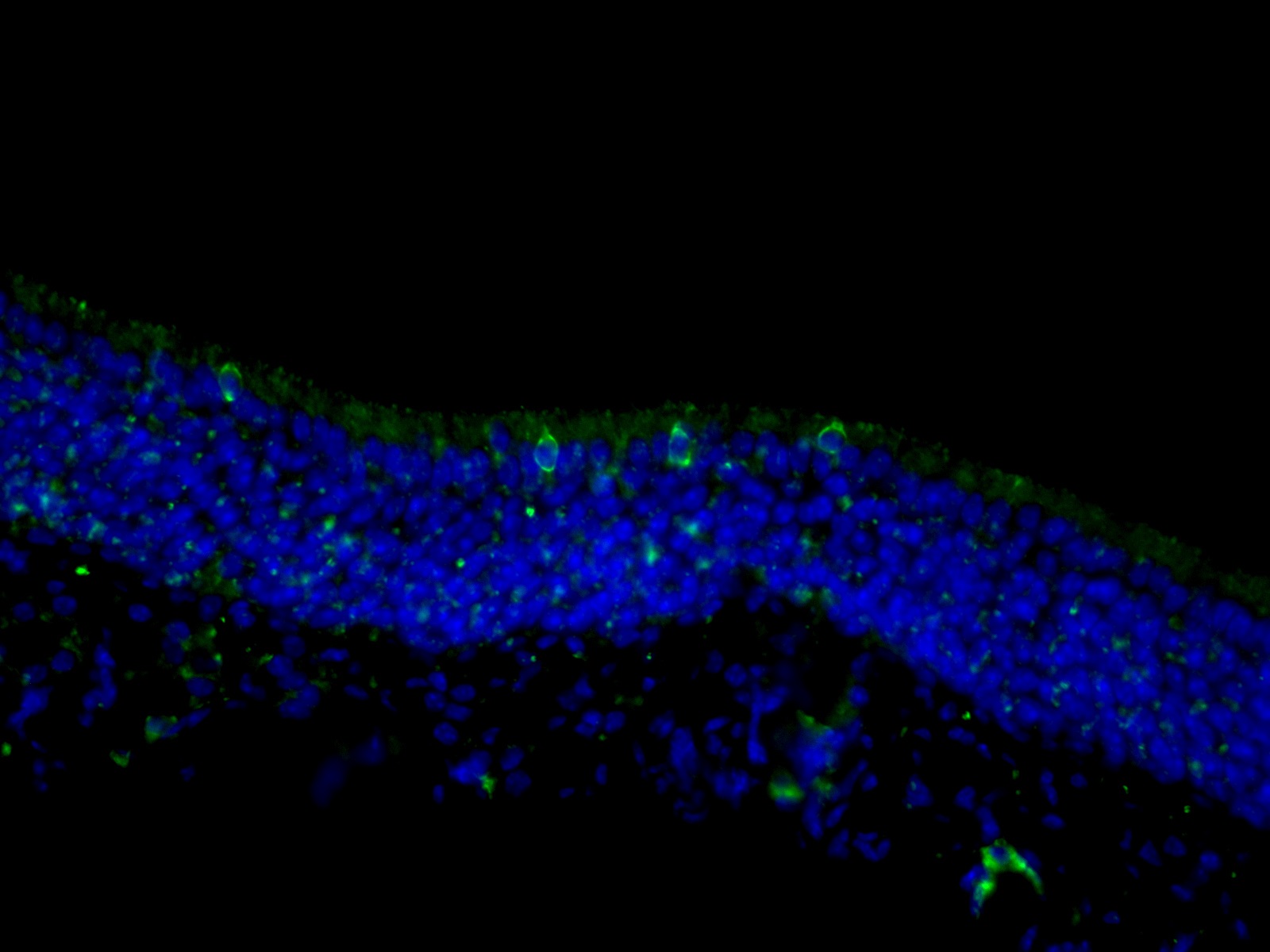验证数据展示
经过测试的应用
| Positive WB detected in | mouse liver tissue |
| Positive IHC detected in | human small intestine tissue Note: suggested antigen retrieval with TE buffer pH 9.0; (*) Alternatively, antigen retrieval may be performed with citrate buffer pH 6.0 |
| Positive IF detected in | mouse olfactory epithelium tissue |
| Positive FC (Intra) detected in | LNCaP cells |
推荐稀释比
| 应用 | 推荐稀释比 |
|---|---|
| Western Blot (WB) | WB : 1:500-1:1000 |
| Immunohistochemistry (IHC) | IHC : 1:50-1:500 |
| Immunofluorescence (IF) | IF : 1:50-1:200 |
| Flow Cytometry (FC) (INTRA) | FC (INTRA) : 0.40 ug per 10^6 cells in a 100 µl suspension |
| It is recommended that this reagent should be titrated in each testing system to obtain optimal results. | |
| Sample-dependent, Check data in validation data gallery. | |
产品信息
18027-1-AP targets TRPM5 in WB, IHC, IF, FC (Intra), ELISA applications and shows reactivity with human, mouse, rat samples.
| 经测试应用 | WB, IHC, IF, FC (Intra), ELISA Application Description |
| 文献引用应用 | WB, IHC, IF |
| 经测试反应性 | human, mouse, rat |
| 文献引用反应性 | human, mouse, rat |
| 免疫原 | TRPM5 fusion protein Ag12593 种属同源性预测 |
| 宿主/亚型 | Rabbit / IgG |
| 抗体类别 | Polyclonal |
| 产品类型 | Antibody |
| 全称 | transient receptor potential cation channel, subfamily M, member 5 |
| 别名 | MTR1, MLSN1- and TRP-related gene 1 protein, LTrpC-5, LTrpC5, LTrpC 5 |
| 计算分子量 | 98 kDa, 131 kDa |
| 观测分子量 | 98 kDa |
| GenBank蛋白编号 | BC093787 |
| 基因名称 | TRPM5 |
| Gene ID (NCBI) | 29850 |
| RRID | AB_2287825 |
| 偶联类型 | Unconjugated |
| 形式 | Liquid |
| 纯化方式 | Antigen affinity purification |
| UNIPROT ID | Q9NZQ8 |
| 储存缓冲液 | PBS with 0.02% sodium azide and 50% glycerol , pH 7.3 |
| 储存条件 | Store at -20°C. Stable for one year after shipment. Aliquoting is unnecessary for -20oC storage. |
背景介绍
Transient receptor potential (TRP) proteins are a diverse family of proteins with structural features typical of ion channels (PMID: 14634208). TRPM5 is a member of the TRPM (melastatin-like) subfamily which are Ca(2+)-permeable cation channels localized predominantly to the plasma membrane (PMID: 11864597). TRPM5 plays a central role in taste transduction (PMID: 17610722). TRPM5 is implicated in enhancing TRPA1 expression and may be involved in regulating insulin secretion (PMID: 21932052). Alternative splicing results in transcript variants encoding distinct isoforms with calculated molecular weights of 98 kDa or 131 kDa. It has been reported that TRPM5 is N-linked glycosylated at a unique site and TRPM5 glycosylation seems not to be involved in channel trafficking, but mainly in its functional regulation (PMID: 24605085).
实验方案
| Product Specific Protocols | |
|---|---|
| WB protocol for TRPM5 antibody 18027-1-AP | Download protocol |
| IHC protocol for TRPM5 antibody 18027-1-AP | Download protocol |
| Standard Protocols | |
|---|---|
| Click here to view our Standard Protocols |
发表文章
| Species | Application | Title |
|---|---|---|
Immunity Intestinal Tuft-2 cells exert antimicrobial immunity via sensing bacterial metabolite N-undecanoylglycine. | ||
Food Funct Piperine, as a TAS2R14 agonist, stimulates the secretion of glucagon-like peptide-1 in the human enteroendocrine cell line Caco-2.
| ||
Appetite Chronic exposure to liquid sucrose and dry sucrose diet have differential effects on peripheral taste responses in female rats. | ||
Respir Res Human airway tuft cells influence the mucociliary clearance through cholinergic signalling | ||
Curr Med Sci Insufficient TRPM5 Mediates Lipotoxicity-induced Pancreatic β-cell Dysfunction |




